The works
The works are also available in art prints on canvas 100 cm by 150 cm signed by the artist and framed.
Please click on the link behind the picture for a better view.
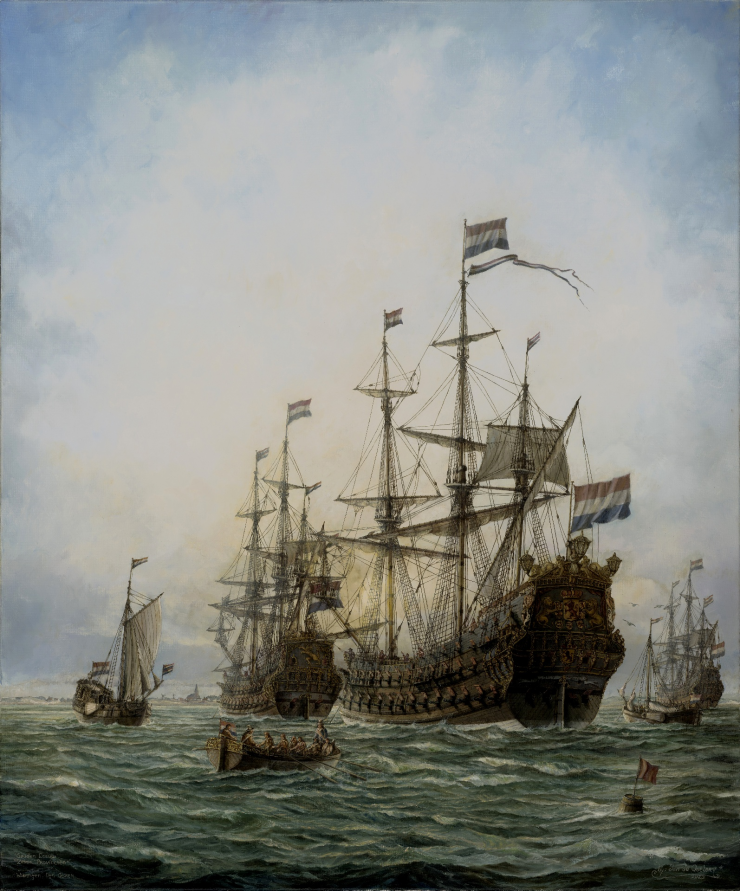
The “Gouden Leeuw “ and “Zeven Provinciën” in front of Den Oever , Wieringen around 1670
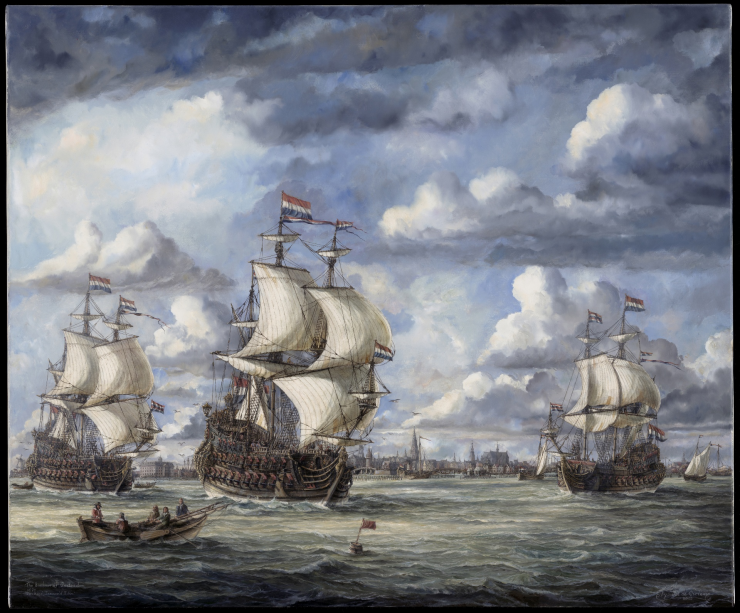
Amsterdam 1670, oil on canvas by , Jan de Quelery on the left the Zierikzee, in the middle the Jaarsveld, Edam .
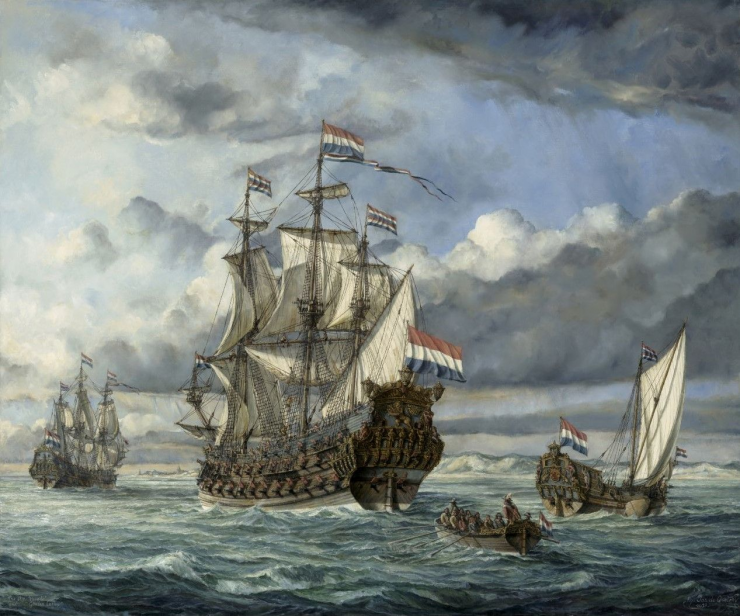
olie verf op linnen 100 cm bij 120 cm
The "Hollandia" in front of Walcheren around 1670, by , Jan de Quelery
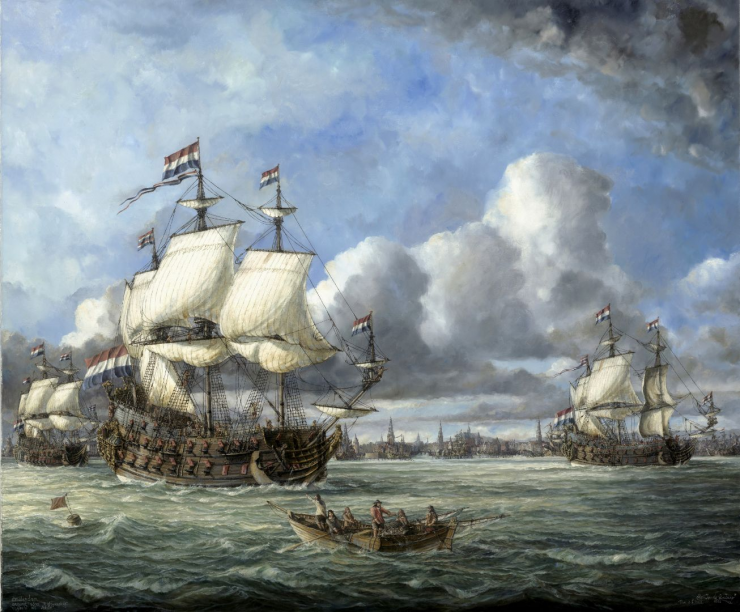
Amsterdam around 1670 with [ from the left] "Ridderschap|" , "Vrijheid" en "Vrede"
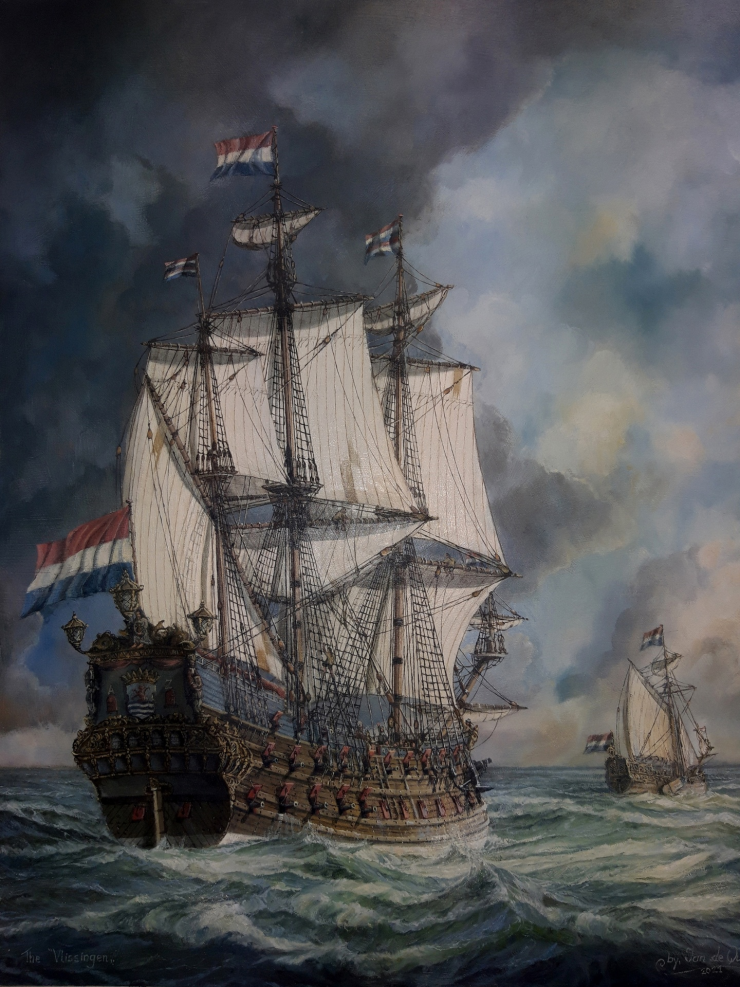
17th Century , oil on panel 40 cm by 50 cm
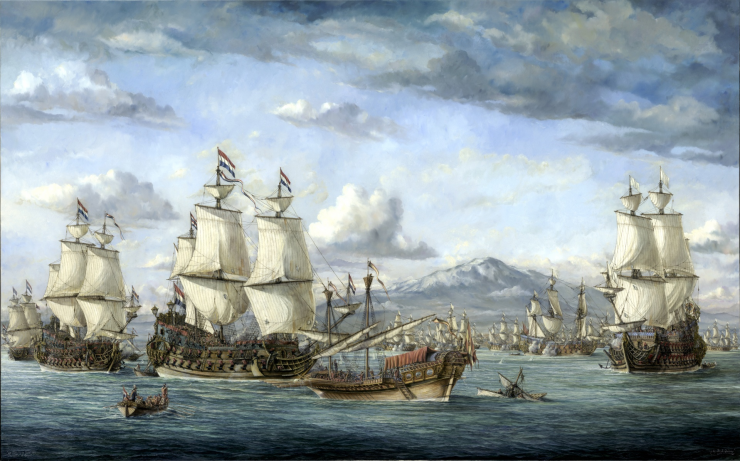
The French fleet consisted of 29 ships of the line, 5 frigates and 8 burners commanded by Abraham Duquesne. The Dutch-Spanish fleet was composed of 27 ships of the line (17 Dutch-10 Spanish) and 5 burners, commanded by Lieutenant Admiral General Michiel de Ruyter. It was a short but fierce naval battle. Neither side lost a ship, but many were killed and wounded, especially on the Dutch side. The battle ended abruptly. The Dutch commander Michiel de Ruyter was seriously injured. When the French admiral Abraham Duquesne learned of this, he decided to withdraw his fleet, out of respect for the legendary naval hero. As a result, the battle ended in a draw.
Michiel de Ruyter died a week later from his injuries.
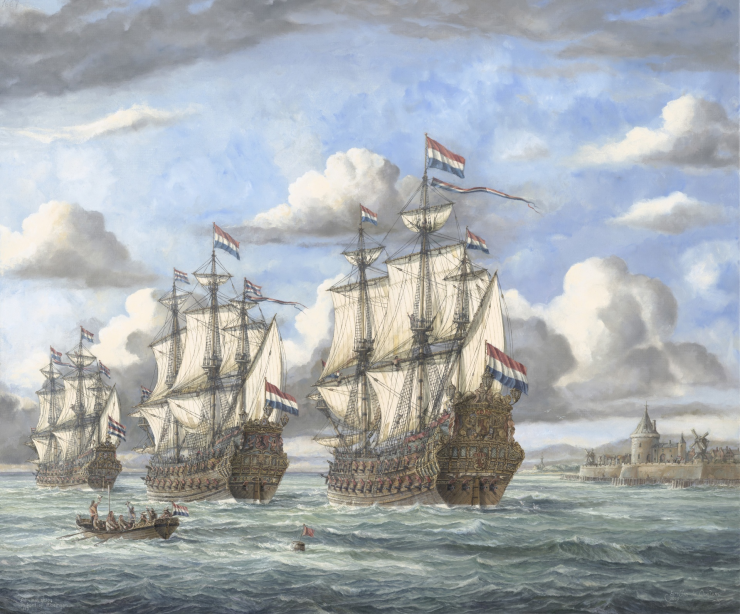
Admiral ships in front of Vlissingen 1667.
From left to right ; "Walcheren", "Zierikzee" and the ship "Zeven Provinciën"
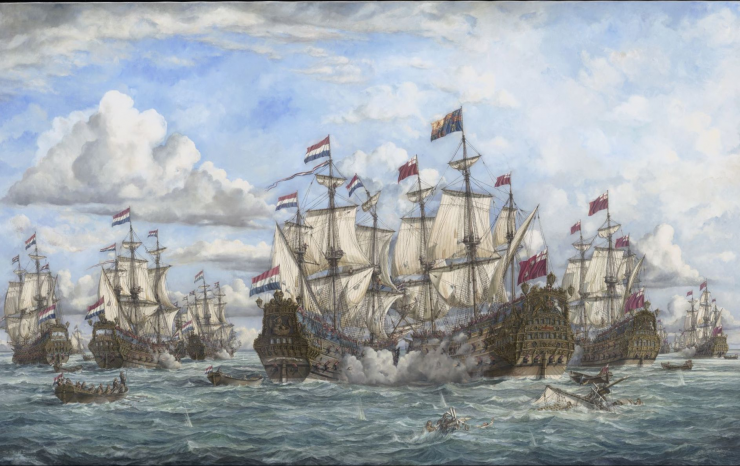
The Battle of Lowestoft 1665
The Battle of Lowestoft took place on 13 June [O.S. 3 June] 1665 during the Second Anglo-Dutch War. A fleet of more than a hundred ships of the United Provinces commanded by Lieutenant-Admiral Jacob van Wassenaer Obdam attacked an English fleet of equal size commanded by James, Duke of York forty miles east of the port of Lowestoft in Suffolk.
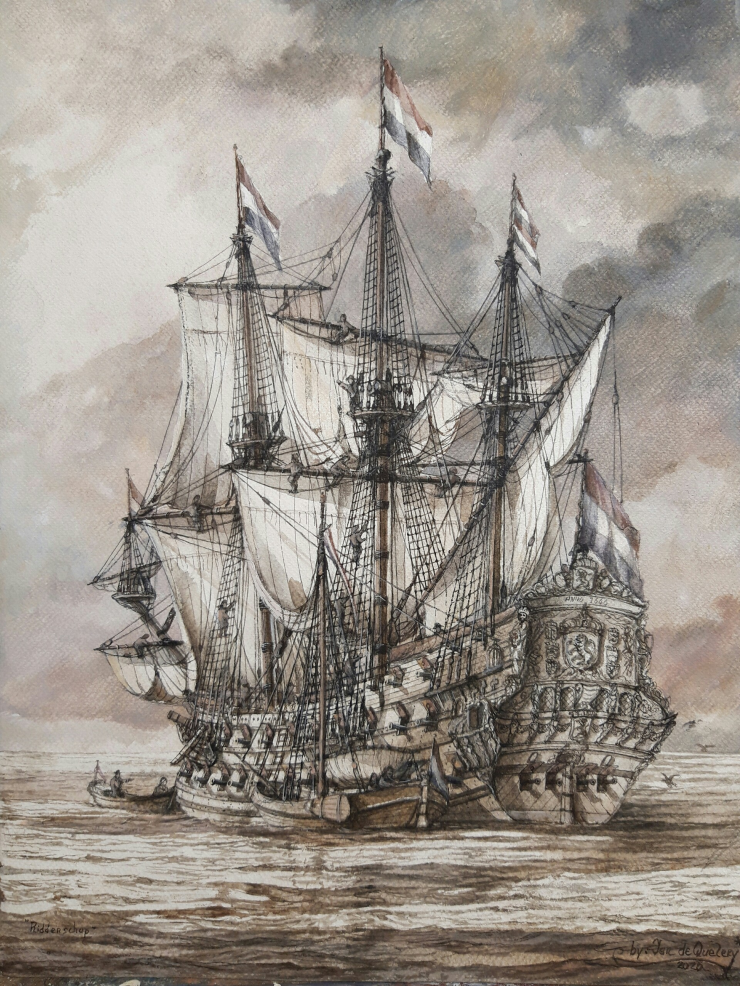
Portrait of the ‘Ridderschap’, 66-guns, of the Admiralty of the Maas, built in 1666 and lost at sea in 1690.
This work in water color, men in the rigging , because nearly rain and winds to come . .
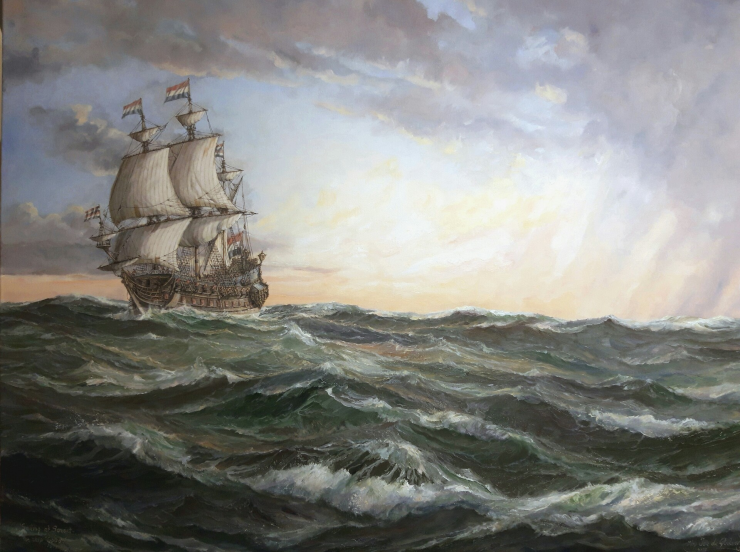
She was build in 1665 , 72 guns .
In this work we see her sailing at sunset.
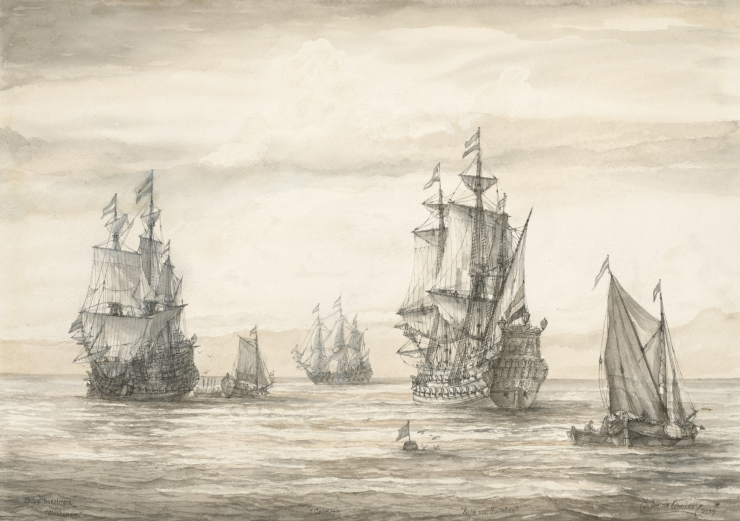
With the “Walcheren “ on the left and the ship “Huis van Zwieten” [ right] build in 1653 .
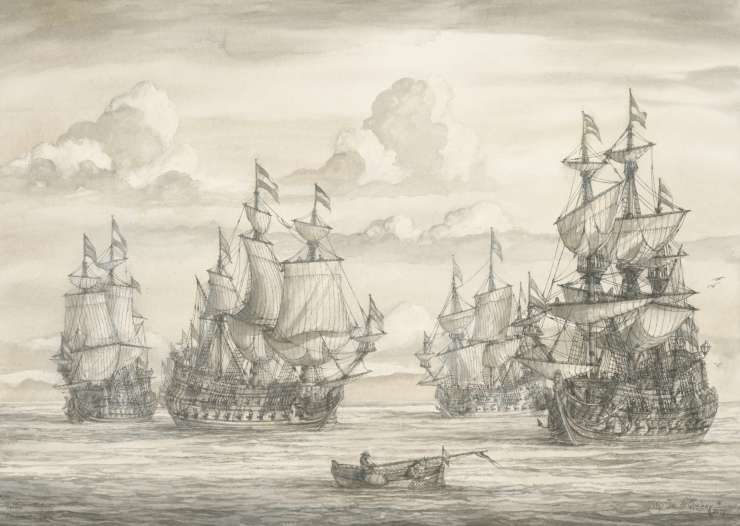
Zeelandia – Hollandia – Walcheren – Spiegel ;
“Hollandia “ a 86 gun ship build in 1665 and wrecked in 1683 .
“Walcheren “ build in 1665 , and wrecked in 1666 on the Wester Scheldt in front of Flushing .
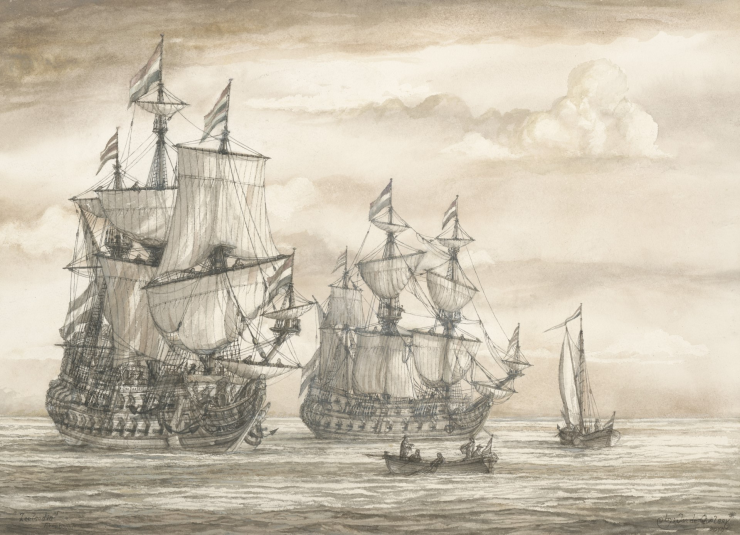
The “Zeelandia” had 54 guns and was build in 1653 , Jan Evertsen sailed to Copenhagen in the “Zeelandia”as Vice Admiral under the commander of the Zeeland squadron .
the “Akerboom”; A 64 – gun ship build in 1664 . wrecked in 1689 .
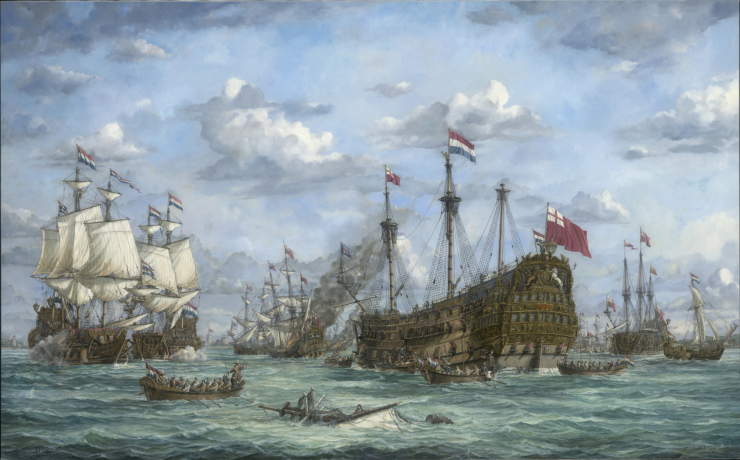
From the left ; "Agatha" , "Beschermer" , "Charles V" , "Propatia" , The "Royal Charles" , "Matthias" and a Dutch Admirals yacht .
The Royal Charles, 80-gun first rate ship, built in 1655. In the Battle of Lowestoft on 13 June 1665, the first battle of the Second Anglo-Dutch War (1665-1667), the Eendracht, then armed with 73-guns, dueled the much heavier 80-gun English flagship the Royal Charles. In the early afternoon, the Eendracht was hit in the powder room and exploded. There were only five survivors out of a crew of 409.
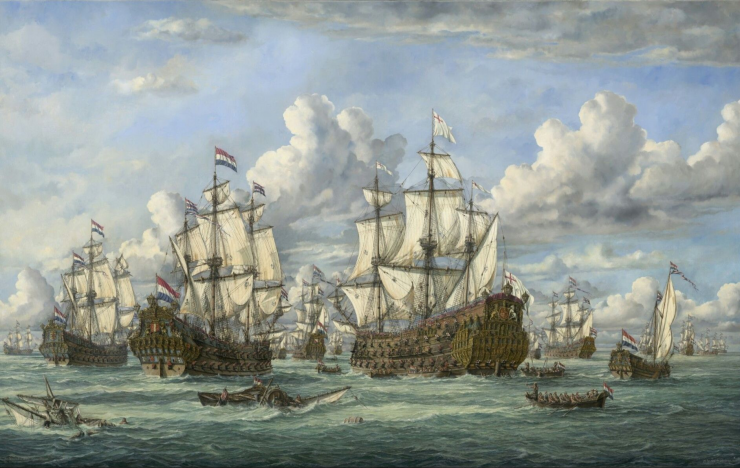
De Ruyter tried unsuccessfully to capture the Royal Prince. At seven o’clock that evening, the battle had been fought and the retreat was
sounded. Rupert was furious at the French for abandoning him. Not one ship was lost and the English had captured four of the returning merchant ships. Three thousand men were killed, more than half of them English or French. Isaac Sweers, Johan de Liefde, Jan Pauluszoon van Gelder, David Swerius, Hendrick Visscher and Dirk Jobszoon Kiela were dead and Cornelis de Liefde, on board the Gelderland, was seriously wounded.
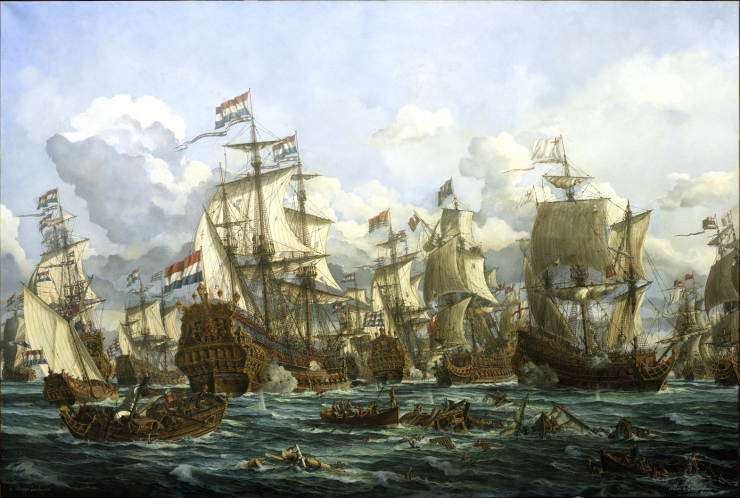
The Four Days’ Battle took place during the Second Anglo-Dutch War (1665-1667) and was fought between the English and Flemish coasts from 11th to 14th June 1666. The Dutch fleet, under the leadership of Michiel Adriaanszoon de Ruyter, embarked on a long and bloody confrontation with the English fleet, commanded by Rupert, the Duke of Cumberland, and George Monck, first Duke of Albemarle. Fifty-six English vessels took on 85 Dutch warships.
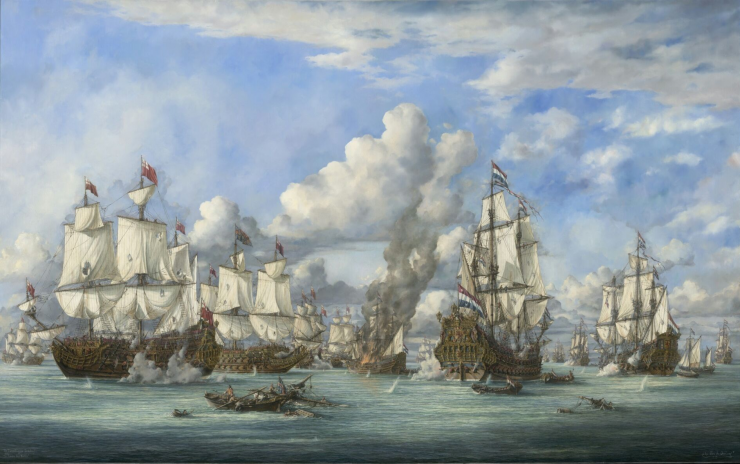
This work of oil on canvas depicts a moment on the first day of this sea-battle, when the great ships approach each other in calm winds. The Royal Charles was severely damaged in this confrontation, but the ship Zeven Provinciën suffered even heavier losses from a double attack by the Royal Charles and the Royal Sovereign. She was saved by a rising wind which enabled her to sail to the Flemish coast. The continuing calm prevented Tromp and his rear guard from providing De Ruyter with the support he needed.
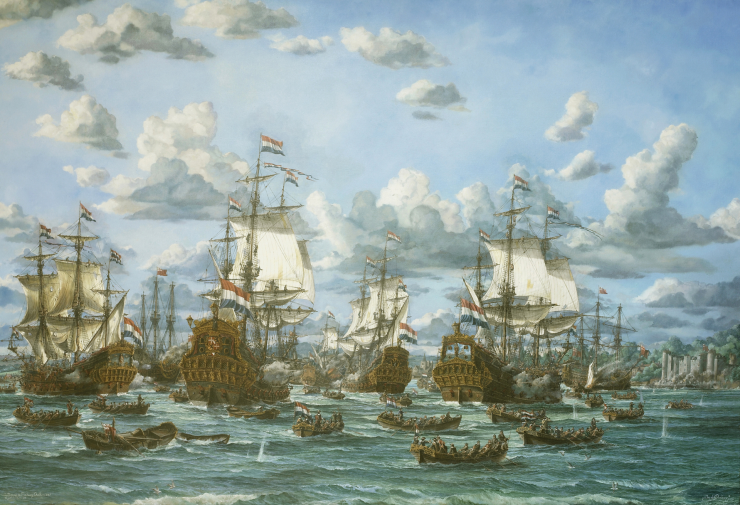
At the beginning of the new season in 1667, Michiel de Ruyter was feeling quite miserable. He was suffering from frequent attacks of fever and was most upset by the malicious glee shown by his fellow countrymen in response to the Great Fire of London, from 2-5 September 1666. Less than a year earlier, the city had been infested by the Great Plague (1665-1666) which had claimed the lives of between 5,000 and 100,000 citizens. As far as De Ruyter was concerned, these two major incidents were a disaster. The English could not afford to fit out a new war fleet because all available funds had to be targeted towards coping with the aftermath of the Great Plague.
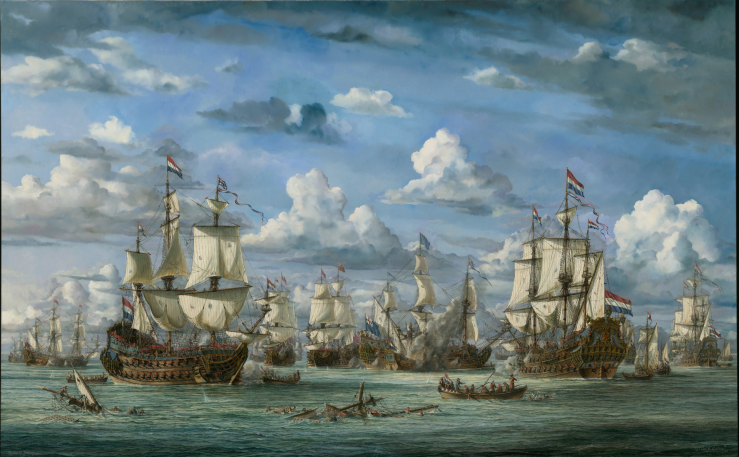
The political situation in the Netherlands in the summer of 1672 was not promising. In the south, King Louis XIV of France and his experienced army did not have much difficulty in overthrowing the debilitated defenses of the Republic. Christoph Bernard von Galen, the Bishop of Munster, and his troops, who invaded the country from the east, encountered little resistance to make matters worse. The English posed a threat from the sea. Together with the French, they had amassed a fleet of 93 ships, 24 fire-ships, 6,158 cannons and 40,000 sailors.
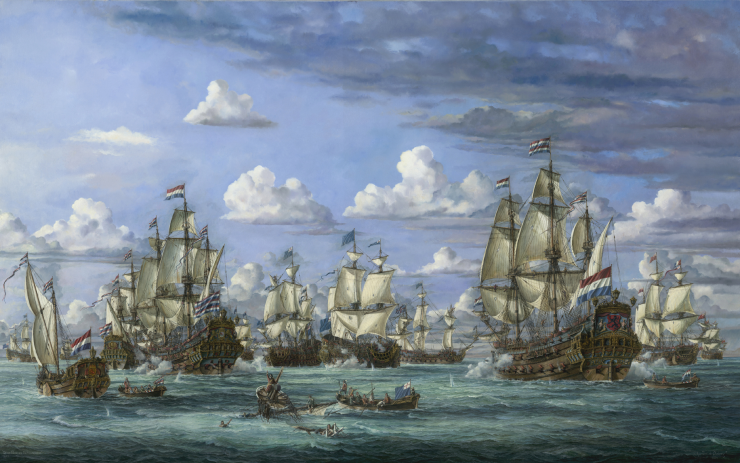
After the unsuccessful attempt by France, Munster and Cologne in 1672 to invade the Dutch Republic overland across the Hollandic Water Line (the mayor rivers and lakes), the English and French tried to break through from the sea. De Ruyter did his best to block the English marine base at Chatham with sunken ships, but this did not work, so he retreated to Schooneveld off the coast of Zeeland, at the estuary of the river Scheldt, towards the south of Holland.
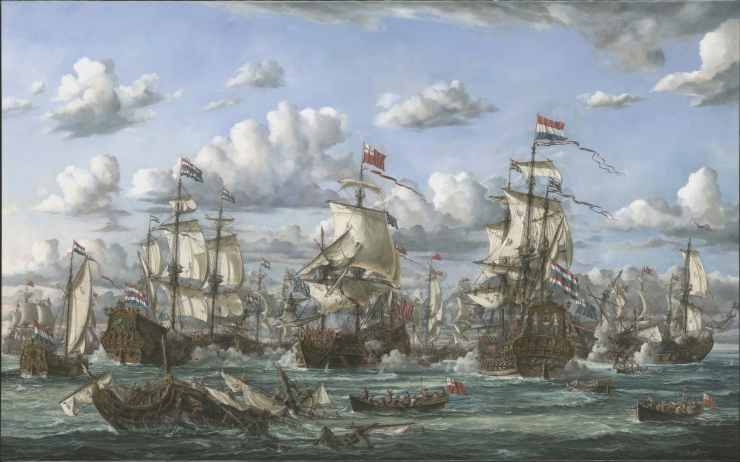
This work, The Battle of Texel 1673, is displayed in the Royal Netherlands Navy Museum, Den Helder.
It captures the immortal moment when both central squadrons were approaching each other and the fighting which followed has been described by the antagonists themselves that it was the bitterest battle they had ever endured.
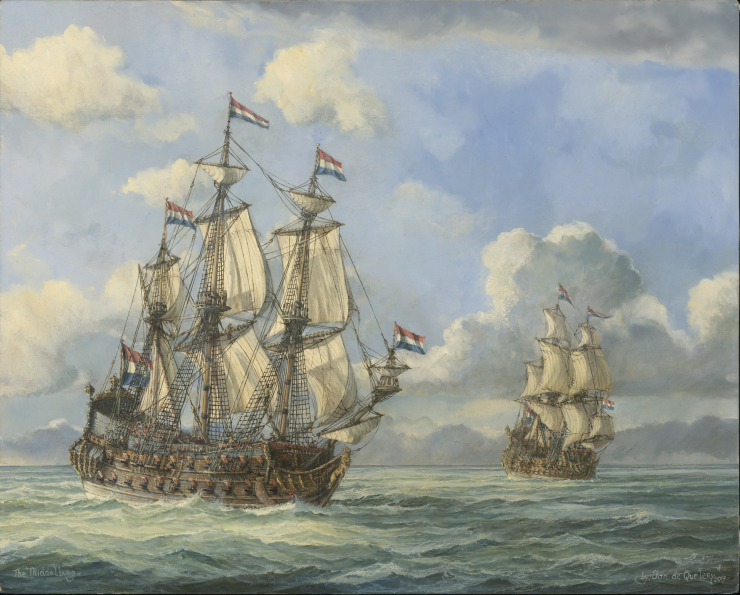
I'll add a description later.
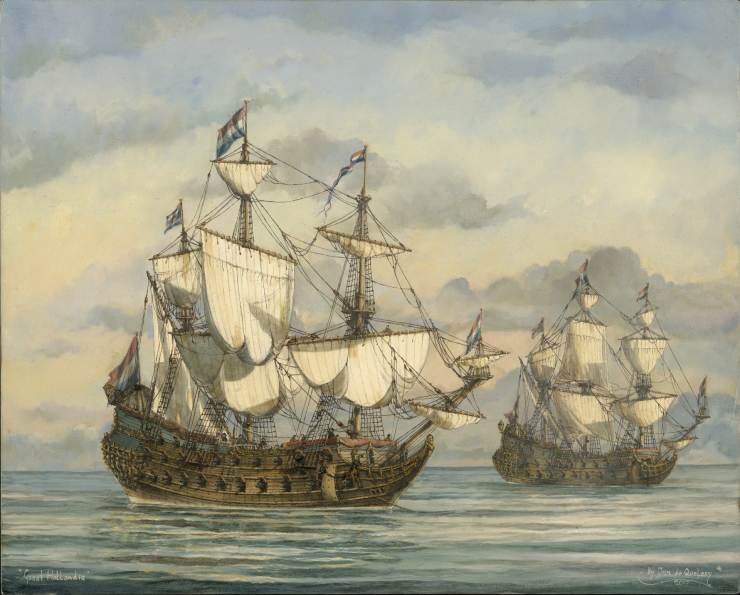
I'll add a description later.
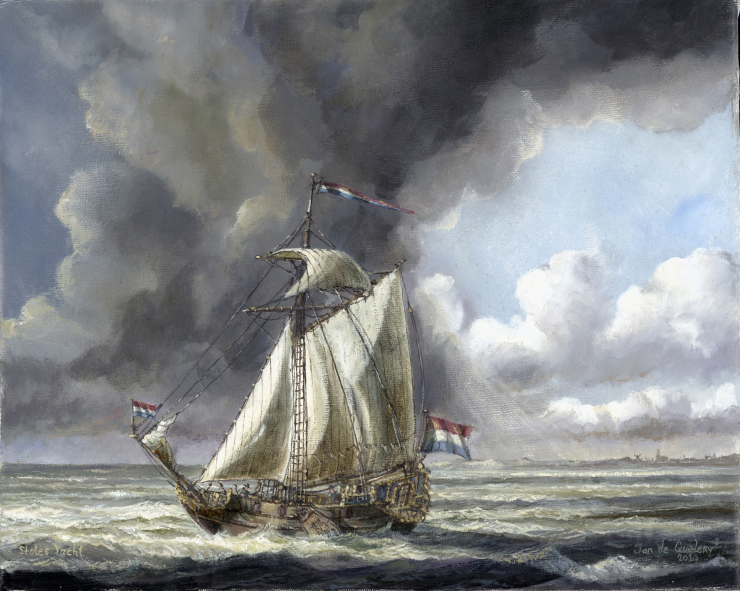
One of my smaller works..painted with a magnifying glass
